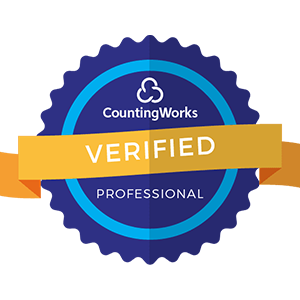Welcome to the future of work! 🚀 If you're reading this, chances are you're navigating the wild world of remote and hybrid workforces. It's like trying to herd cats... if the cats were spread across different time zones and had varying degrees of Wi-Fi connectivity. But fear not, intrepid leader! We're about to embark on a journey through the best Human Capital Management (HCM) practices that will turn your scattered team into a well-oiled, productive machine.
So, grab your favorite work-from-home beverage (we won't judge if it's your third coffee before noon), and let's dive into the art and science of managing your digital-age workforce!
The Remote Revolution: It's Not Just a Trend, It's the Future

Before we jump into the nitty-gritty of HCM best practices, let's take a moment to appreciate just how much the work landscape has changed. We're not in Kansas anymore, Toto!
The Mind-Blowing Stats:
- According to a survey by Upwork, 73% of all departments will have remote workers by 2028.
- A Gartner survey found that 82% of company leaders plan to allow employees to work remotely some of the time.
- Global Workplace Analytics predicts that 25-30% of the workforce will be working-from-home multiple days a week by the end of 2021.
Whoa, right? The remote work genie is out of the bottle, and there's no putting it back. But here's the kicker: managing a remote or hybrid workforce isn't just about making sure everyone has a good internet connection. It's about reimagining your entire approach to Human Capital Management.
The HCM Paradigm Shift: From Control to Empowerment
Traditional HCM was all about control. Clock in, clock out, sit at your desk, attend your meetings. But in the world of remote and hybrid work, that old-school approach is about as useful as a floppy disk in a Tesla.
The new paradigm? Empowerment. It's about giving your team the tools, trust, and autonomy they need to crush their goals, whether they're working from a home office, a coffee shop, or yes, even the actual office.
Here's what this shift looks like in practice:
- Focus on outcomes, not hours: It's not about how long someone sits at their desk, but what they achieve.
- Emphasize communication and collaboration: When you can't tap someone on the shoulder, clear communication becomes crucial.
- Prioritize employee well-being: Without the natural boundaries of an office, work-life balance becomes more important than ever.
- Leverage technology: The right tools can bridge the physical gap and create a seamless work experience.
Ready to dive into the specifics? Let's go!
1. Recruitment and Onboarding: Casting a Wider Net
One of the silver linings of remote work? Your talent pool just got a whole lot bigger. But with great power comes great responsibility (thanks, Spider-Man's uncle!). Here's how to nail recruitment and onboarding in the digital age:
🎣 Casting Your Net
- Expand your horizons: Don't limit yourself to local candidates. The perfect fit might be in another state (or country!).
- Leverage virtual job fairs: These online events can help you connect with a diverse range of candidates.
- Use video interviews wisely: They're great for initial screenings, but remember to account for potential tech issues.
🚀 Launching New Hires
- Create a virtual onboarding program: Include video tutorials, interactive sessions, and plenty of opportunities for Q&A.
- Assign a virtual buddy: Give new hires a go-to person for those "quick questions" they'd normally ask a desk neighbor.
- Send a welcome package: Physical items can help create a tangible connection in a digital world.
Pro Tip: Use project management tools like Trello or Asana to create an onboarding checklist. It's like a video game quest, but for starting a new job!
2. Performance Management: Goodbye Annual Reviews, Hello Continuous Feedback
In the fast-paced world of remote work, waiting for an annual review to give feedback is like using a carrier pigeon in the age of instant messaging. It's time to embrace continuous performance management!
🔄 The Continuous Feedback Loop
- Regular check-ins: Schedule weekly or bi-weekly one-on-ones to discuss progress, challenges, and goals.
- Use performance management software: Tools like 15Five or Lattice can help facilitate ongoing feedback.
- Encourage peer-to-peer feedback: Create a culture where team members regularly recognize each other's contributions.
🎯 Goal Setting and OKRs
- Set clear, measurable objectives: In a remote environment, clarity is king.
- Use the OKR (Objectives and Key Results) framework: This method, used by tech giants like Google, can help align individual goals with company objectives.
- Make goals visible: Use shared documents or dashboards to keep everyone aligned and accountable.
Mind-Bending Stat: According to a study by Gallup, employees whose managers hold regular meetings with them are almost 3 times as likely to be engaged as employees whose managers don't.
3. Learning and Development: Upskilling in Your Pajamas
Just because your team isn't in a physical classroom doesn't mean learning should stop. In fact, in the rapidly evolving world of remote work, continuous learning is more important than ever.
🧠 Creating a Learning Culture
- Offer a variety of learning formats: Mix it up with video courses, webinars, podcasts, and interactive workshops.
- Implement a Learning Management System (LMS): Platforms like Coursera for Business or LinkedIn Learning can provide a wealth of courses.
- Encourage knowledge sharing: Set up regular "lunch and learn" sessions where team members can share their expertise.
🌱 Personalized Growth Plans
- Use skills assessments: Tools like Pluralsight Skills can help identify areas for growth.
- Create individual development plans: Work with each team member to set personal learning goals.
- Offer learning stipends: Give employees a budget to pursue courses or certifications of their choice.
Learning Lightbulb: According to LinkedIn's 2020 Workplace Learning Report, 94% of employees say they would stay at a company longer if it invested in their learning and development.
4. Employee Engagement: Creating Connection in a Digital World

When your water cooler is virtual, fostering engagement takes a bit more creativity. But fear not! There are plenty of ways to keep your remote team feeling connected and motivated.
🤝 Building Virtual Camaraderie
- Virtual coffee breaks: Schedule optional social time for casual chats.
- Online team-building activities: Try virtual escape rooms, trivia nights, or even remote cooking classes.
- Create themed Slack channels: Encourage non-work discussions around shared interests.
📈 Measuring and Boosting Engagement
- Regular pulse surveys: Use tools like Culture Amp or Officevibe to gauge employee sentiment.
- Virtual town halls: Host regular company-wide meetings to share updates and celebrate wins.
- Recognition programs: Use platforms like Bonusly to encourage peer-to-peer recognition.
Engagement Epiphany: A Gallup study found that highly engaged business units achieve a 41% reduction in absenteeism and a 17% increase in productivity.
5. Compensation and Benefits: Reimagining Rewards for the Remote Age
When your team is spread across different locations, traditional approaches to compensation and benefits might need a rethink. Here's how to keep things fair and attractive in a remote world:
💰 Salary Considerations
- Decide on your compensation philosophy: Will you pay based on employee location or have a single global pay scale?
- Use salary data tools: Platforms like PayScale can help you stay competitive across different markets.
- Be transparent: Clear communication about how salaries are determined can help prevent misunderstandings.
🏖️ Benefits for the Digital Nomad
- Flexible time off: Consider unlimited PTO policies to emphasize work-life balance.
- Home office stipends: Help employees create a comfortable and productive work environment.
- Virtual wellness programs: Offer online fitness classes, meditation sessions, or mental health resources.
Benefits Breakthrough: A study by Zenefits found that 78% of employees said that benefits are very or extremely important to their job satisfaction.
6. Communication and Collaboration: The Glue That Holds It All Together
In a remote or hybrid environment, effective communication isn't just important—it's everything. Without those casual office interactions, you need to be more intentional about how your team connects and collaborates.
🗣️ Creating Communication Norms
- Establish clear guidelines: Set expectations for response times, meeting etiquette, and use of different communication channels.
- Use the right tools for the job: Slack for quick chats, Zoom for face-to-face meetings, Asana for project management, etc.
- Embrace asynchronous communication: Not everything needs to be a meeting. Use tools like Loom for video messages that can be viewed on the recipient's own time.
🤝 Fostering Virtual Collaboration
- Use virtual whiteboards: Tools like Miro can recreate the collaborative energy of an in-person brainstorming session.
- Implement document co-editing: Google Docs or Microsoft Office Online allow for real-time collaboration on documents.
- Create virtual "rooms": Use Slack channels or Microsoft Teams spaces for different projects or departments.
Communication Catalyst: A study by Pumble found that 97% of employees believe communication impacts their task efficiency on a daily basis.
7. Compliance and Security: Keeping It Legal (and Safe) in the Wild West of Remote Work
When your office is everywhere, compliance and security can get... complicated. But with the right approach, you can keep your company safe and on the right side of the law.
📜 Navigating the Compliance Maze
- Stay up-to-date on labor laws: Remote work can cross state or country lines, so make sure you're compliant everywhere your employees are located.
- Create clear policies: Develop and communicate policies on work hours, overtime, and use of company equipment.
- Use time tracking software: Tools like Harvest can help ensure compliance with wage and hour laws.
🔒 Securing Your Digital Fortress
- Implement a VPN: Ensure secure connections for employees working from public Wi-Fi.
- Use multi-factor authentication: Add an extra layer of security to all your company accounts.
- Provide cybersecurity training: Educate your team on best practices for staying safe online.
Compliance Conundrum: According to a survey by Forrester, 53% of security leaders say remote workers have fallen victim to phishing attacks since the start of the pandemic.
8. Technology and Tools: Your Remote Work Swiss Army Knife
The right tech stack can make or break your remote work experience. It's not just about having tools—it's about having the right tools that work seamlessly together.
🧰 Building Your Remote Tech Stack
- All-in-one HCM platforms: Solutions like Workday or BambooHR can handle everything from payroll to performance management.
- Project management tools: Asana, Trello, or Monday.com can keep everyone on the same page.
- Video conferencing: Zoom, Google Meet, or Microsoft Teams for those face-to-face interactions.
🔧 Optimizing Your Tools
- Integrate your tools: Look for solutions that play well together to avoid data silos.
- Provide thorough training: Ensure everyone knows how to use the tools effectively.
- Regularly reassess: As your team's needs change, be ready to adapt your tech stack.
Tech Truth: A survey by Buffer found that 78% of remote workers cite "collaboration and communication" as their biggest struggle. The right tools can make all the difference!
9. Work-Life Balance and Well-being: Happy Employees, Happy Company

When work is always just a laptop-open away, maintaining work-life balance becomes both more challenging and more crucial. Here's how to promote well-being in your remote team:
⚖️ Striking the Right Balance
- Encourage clear boundaries: Promote the idea of a "virtual commute" to start and end the workday.
- Respect off-hours: Make it clear that employees aren't expected to respond to messages 24/7.
- Lead by example: As a leader, demonstrate healthy work-life balance practices.
🧘 Promoting Holistic Well-being
- Offer mental health resources: Consider providing access to virtual therapy or meditation apps.
- Encourage physical health: Provide stipends for home exercise equipment or online fitness classes.
- Foster social connections: Create opportunities for team members to connect on a personal level, even from afar.
Well-being Wisdom: According to a study by Gartner, 43% of remote workers feel more productive, but 57% also feel more stressed. Addressing well-being is crucial for long-term success!
10. Culture and Values: Your Company's North Star
Just because your team isn't all in one place doesn't mean your company culture has to suffer. In fact, a strong culture can be the glue that holds your remote team together.
🌟 Defining and Communicating Your Culture
- Articulate your values: Clearly define what your company stands for and how that translates to remote work.
- Share stories: Use company newsletters or all-hands meetings to highlight examples of your values in action.
- Create a culture playbook: Document your cultural norms and expectations for remote work.
🌱 Nurturing Culture from Afar
- Virtual culture ambassadors: Appoint team members to help promote and maintain company culture.
- Culture-focused onboarding: Ensure new hires understand and feel connected to your company culture from day one.
- Regular culture check-ins: Use surveys or focus groups to gauge how well your culture is translating to the remote environment.
Culture Revelation: A study by Deloitte found that 94% of executives and 88% of employees believe a distinct workplace culture is important to business success.
The Remote Work Crystal Ball: What's Next?
As we wrap up our tour of HCM best practices for remote and hybrid work, let's take a peek into the future. What trends should you be watching?
- AI and Machine Learning: Expect to see more AI-powered tools for everything from candidate screening to performance prediction.
- VR and AR: Virtual and augmented reality could transform remote collaboration and training.
- Four-Day Work Weeks: More companies are experimenting with shortened work weeks to boost productivity and well-being.
- Global Talent Pools: As location becomes less relevant, expect to see more truly global teams.
- Hybrid Work Evolution: The balance between remote and in-office work will continue to be refined.
Your Remote Work Journey: The Road Ahead
Congratulations! You've made it through our comprehensive guide to HCM best practices for remote and hybrid work. Let's recap the key takeaways:
- Remote and hybrid work is here to stay—embrace it!
- Focus on outcomes and empower your team with the right tools and trust.
- Communication is key—be intentional and create clear norms.
- Prioritize employee well-being and work-life balance.
- Use technology wisely to bridge the physical gap.
- Don't forget about compliance and security in the digital world.
- Culture matters more than ever in a distributed environment.
Remember, managing a remote or hybrid workforce is a journey, not a destination. It requires flexibility, creativity, and a willingness to experiment and adapt.
So, take a deep breath, do a little stretch (we know you've been sitting for a while reading this!), and get ready to lead your team into the brave new world of work. You've got this!
Final Thought: In the words of the great Wayne Gretzky, "I skate to where the puck is going to be, not where it has been." The future of work is remote and hybrid. By implementing these HCM best practices, you're not just adapting to the present—you're setting your team up for long-term success in the new world of work.
Now go forth and conquer the remote work frontier! Your distributed team is waiting for your leadership. 🚀🌟






